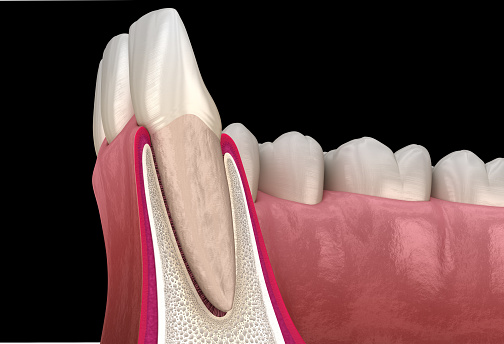Evolution is defined as the gradual development of inheritable traits of humankind over successive generations. Evolutionary processes generate diversity at all levels of biological organization. Charles Darwin in the mid-nineteenth century proposed that evolution occurs because of a natural selection phenomenon. The Darwin theory of natural selection explained that organisms produce more offspring that can survive in their environment, with better physically equipped to survive, grow, and reproduce. Evolution is a cornerstone of modern science, widely accepted as one of the most consistently established of all scientific facts and theories, supported by evidence from not only from the biological sciences but also from anthropology, psychology, geology, and other scientific disciplines, as well as behavioral and social sciences.
The primary function of dentition in mammals is to grasp and crush foods. Teeth also play a role in speech articulation and facial appearance in humans. Human dentition is classified as heterodont and diphyodont. The heterodonty is refected by four tooth classes: incisors, canines, premolars, and molars. While diphyodont is represented by two generations of functional teeth: there are 20 deciduous (milk or lacteal) teeth and 32 permanent (adult) teeth.
From the anthropological perspective, dentition is one of the most important aspects of human evolution. Dentition is a focal point in many comparative and evolutionary population studies due to its stability and durability towards the environmental factor. Certain morphological features of the tooth are known to exhibit population variation. Dental traits such as the shoveling incisor, Carabelli cusp, hypocone, and peg-shaped teeth can be used to determine the ethnicity of the individual. Teeth have also been observed to provide important evidence regarding the habits and occupations of individuals.
When viewed from a forensic science point of view, human dentition also plays an important role in individual identification. The scientific basis of dental identification is the uniqueness of human dentition and the fact that no two oral cavities are alike even in monozygotic twins. Tooth variation such as morphological characteristics, color, shape, tooth wear pattern, and dental anomalies can give further clues regarding the individual identity. As the hardest tissue in the human body, teeth can survive in extreme conditions that involve chemical, physical, and thermal trauma. Forensic odontologists work with other experts, such as dental anthropologists to analyze numerous important information from teeth associated with sex determination, age estimation, ethnic origin, bitemark analysis, and dental records comparison.
The dentition of modern humans has evolved from their hominid ancestors to their current form. Differences between humans and other hominid species are also apparent where some professionals attributed causes like dietary changes to these major anatomical changes. One of the most noticeable differences between Homo sapiens (modern humans) and early hominins is the protruding chin, which is thought to be the result of a decrease in heavy dental use and the use of tongue and oral musculature to form early languages, which resulted in the protruding chin.
The jaw reduction phenomenon from the early hominins to modern humans is usually linked to the advancements towards agricultural cultures as a replacement for hunting and gathering culture. Smaller oral space and sharp teeth are also believed to be a result of the creation of a language that needed a flexible oral system and is also maintained by the creation of softer, more processed foods.
Another change that is also apparent in modern humans, tooth-wise, is the decrease of tooth size in comparison to their close relatives. Megadontia in australopiths is attributed to the need of processing mechanically challenging foods and the need for the larger cheek area, while in Homo, the reduction of molar size is attributed to the use of tools and less challenging foods, as well as to avoid an avalanche in foods.
Differences in tooth sizes concerning the other teeth are also apparent. In early hominins, second molars are the largest compared to the other molars while in Homo the first molar is the largest. The canines also differ with sex in early hominins, where males have smaller canines.
In dental structure, early hominins have thicker enamel layers to cover their teeth than modern humans. This is believed to provide stronger reinforcement for their harder-textured diet.
One result of the evolutionary process of orofacial structure is the presence of differences in the occlusal morphology of teeth. Modern humans have helicoidal occlusal planes, where the anterior teeth slope upwards palatally and the posterior teeth slope upwards buccally. This difference is also caused by the differences in cusps shapes. The molars of Australopithecus have a blunt cusp shape to chew brittle and hard foods like flowers, nuts, and some fruits, whereas the Homo has sloping surfaces and less bulbous cusps for slicing items better.
Author: Arofi Kurniawan, drg., Ph.D
Taken from a journal article titled “Lifestyle Changes and Its Effect Towards the Evolution of Human Dentition”
This article has been published in the Egyptian Journal of Forensic Sciences





